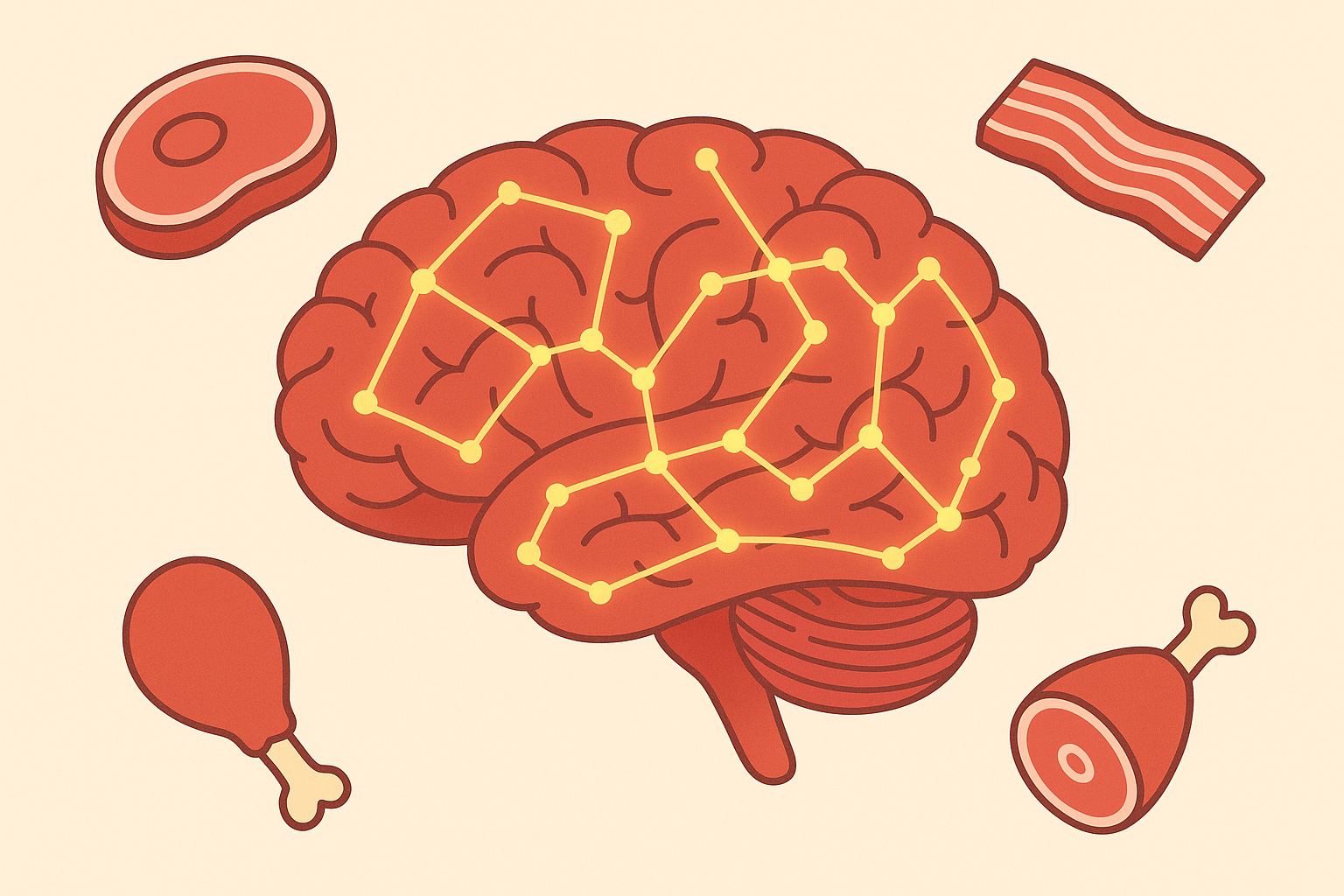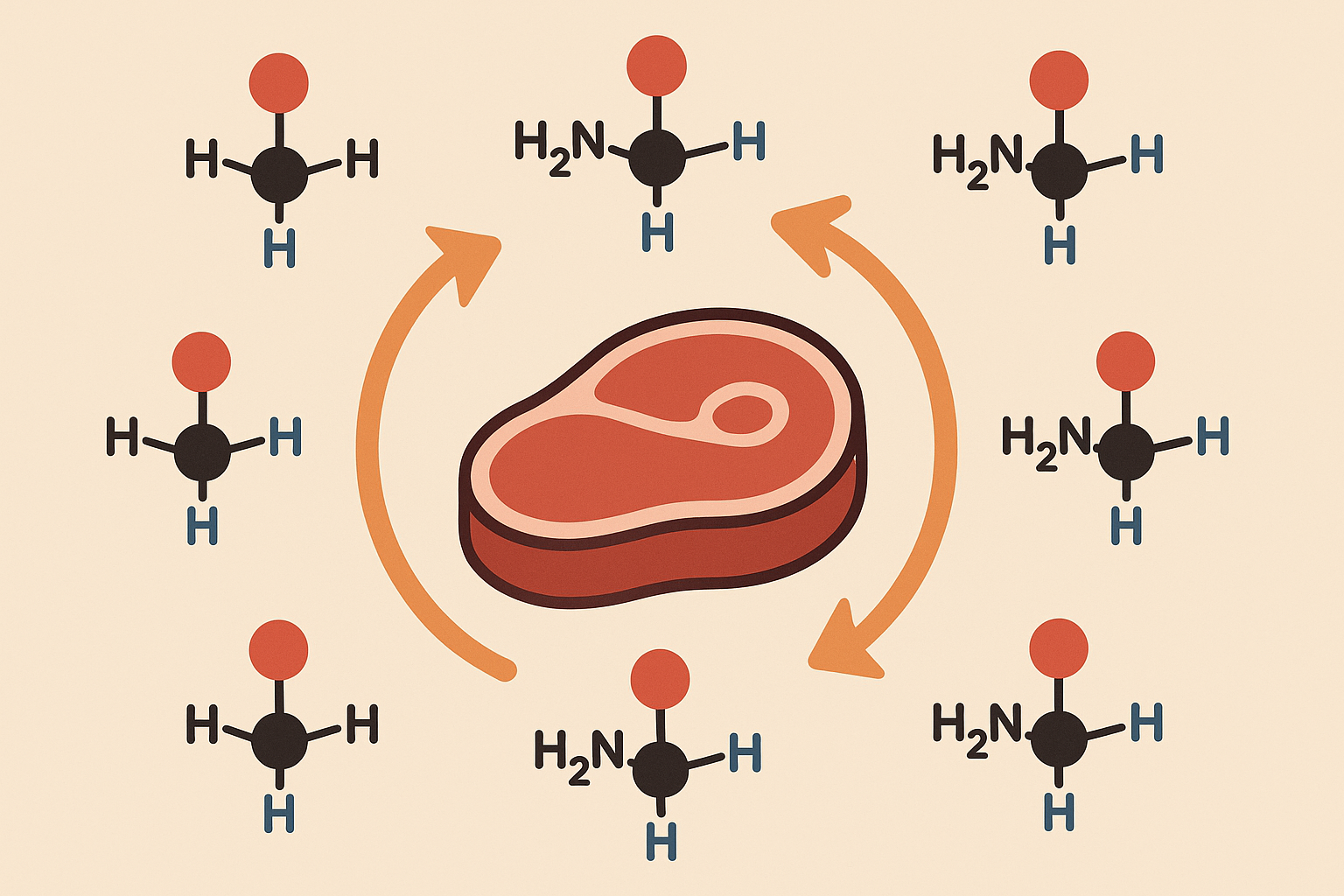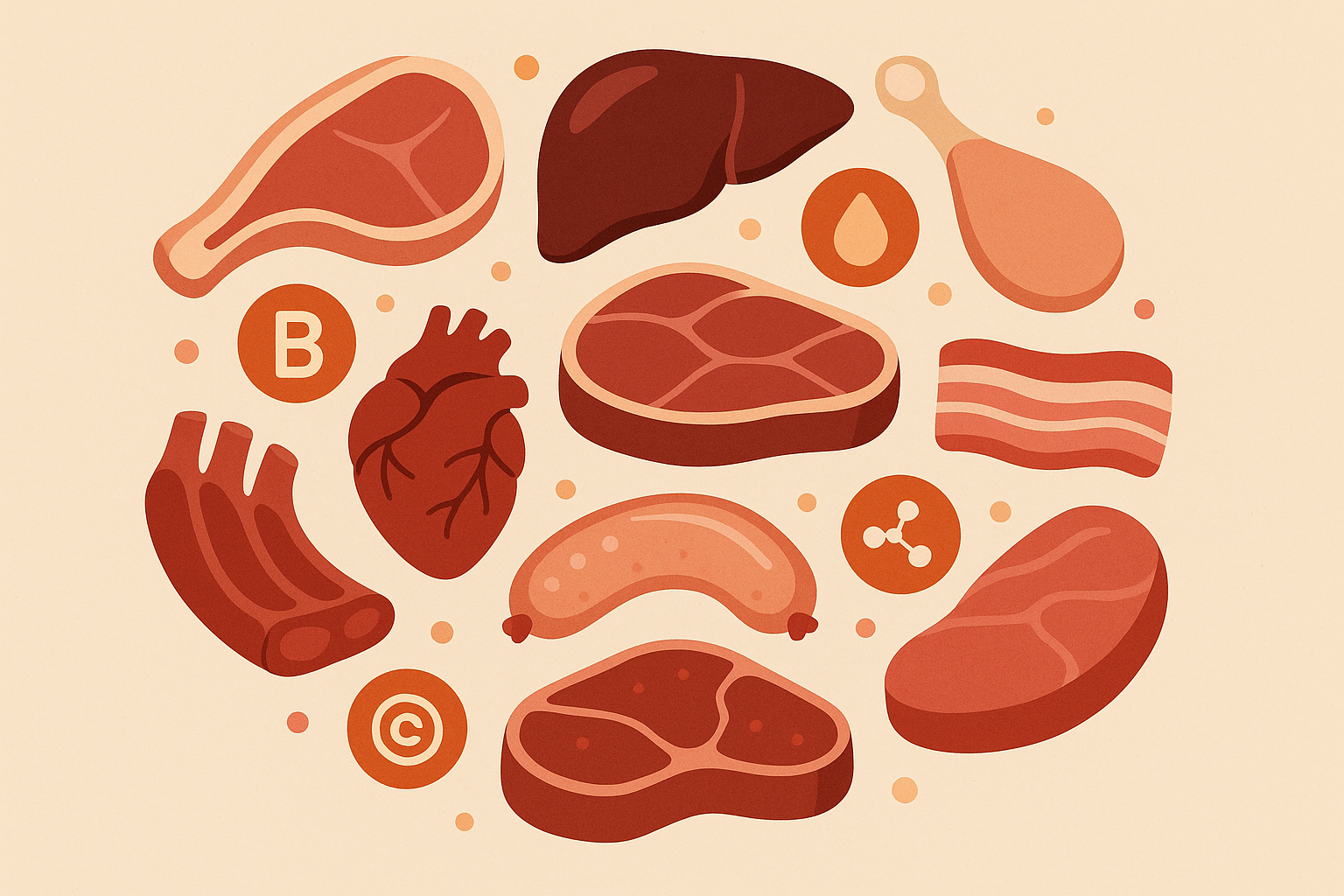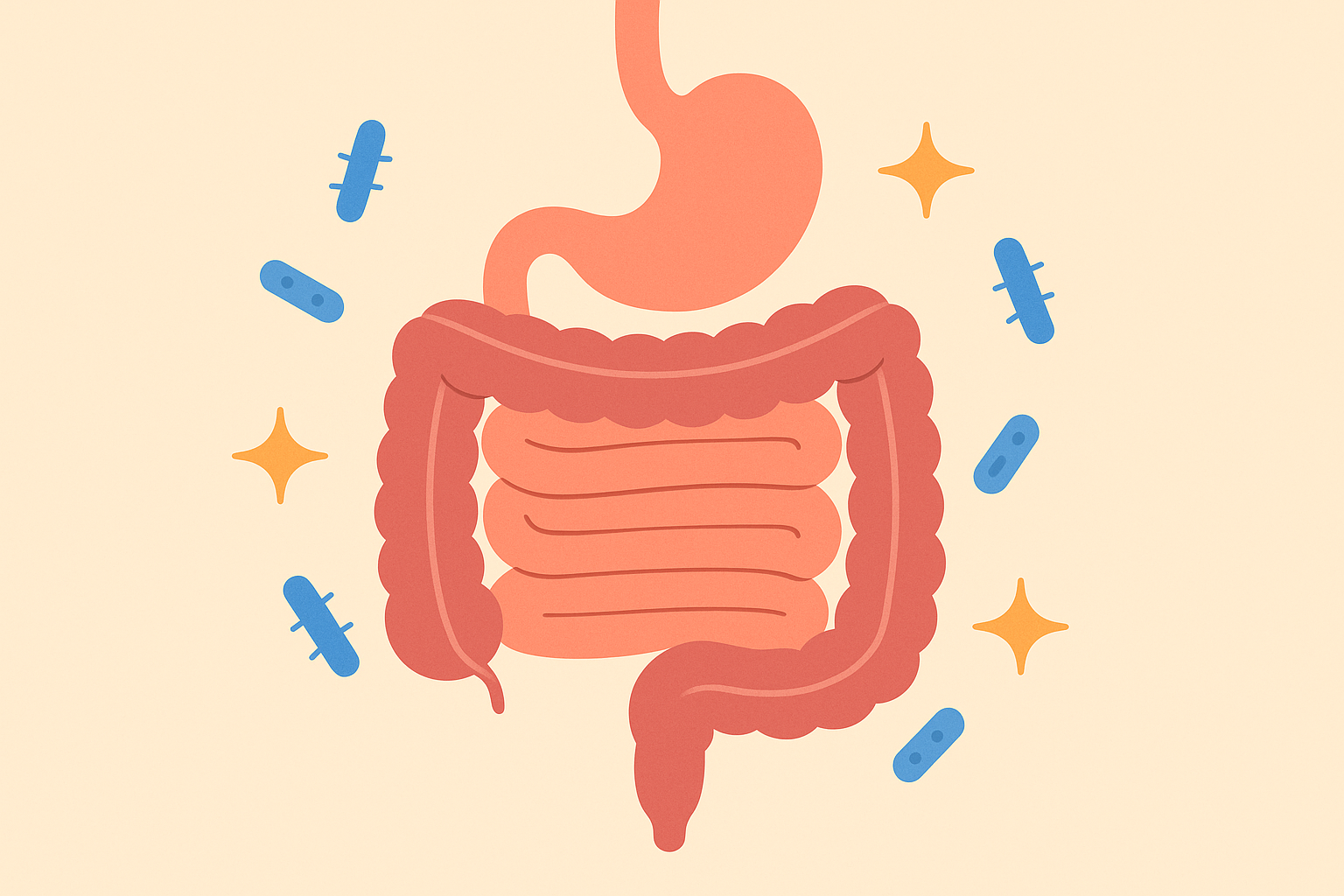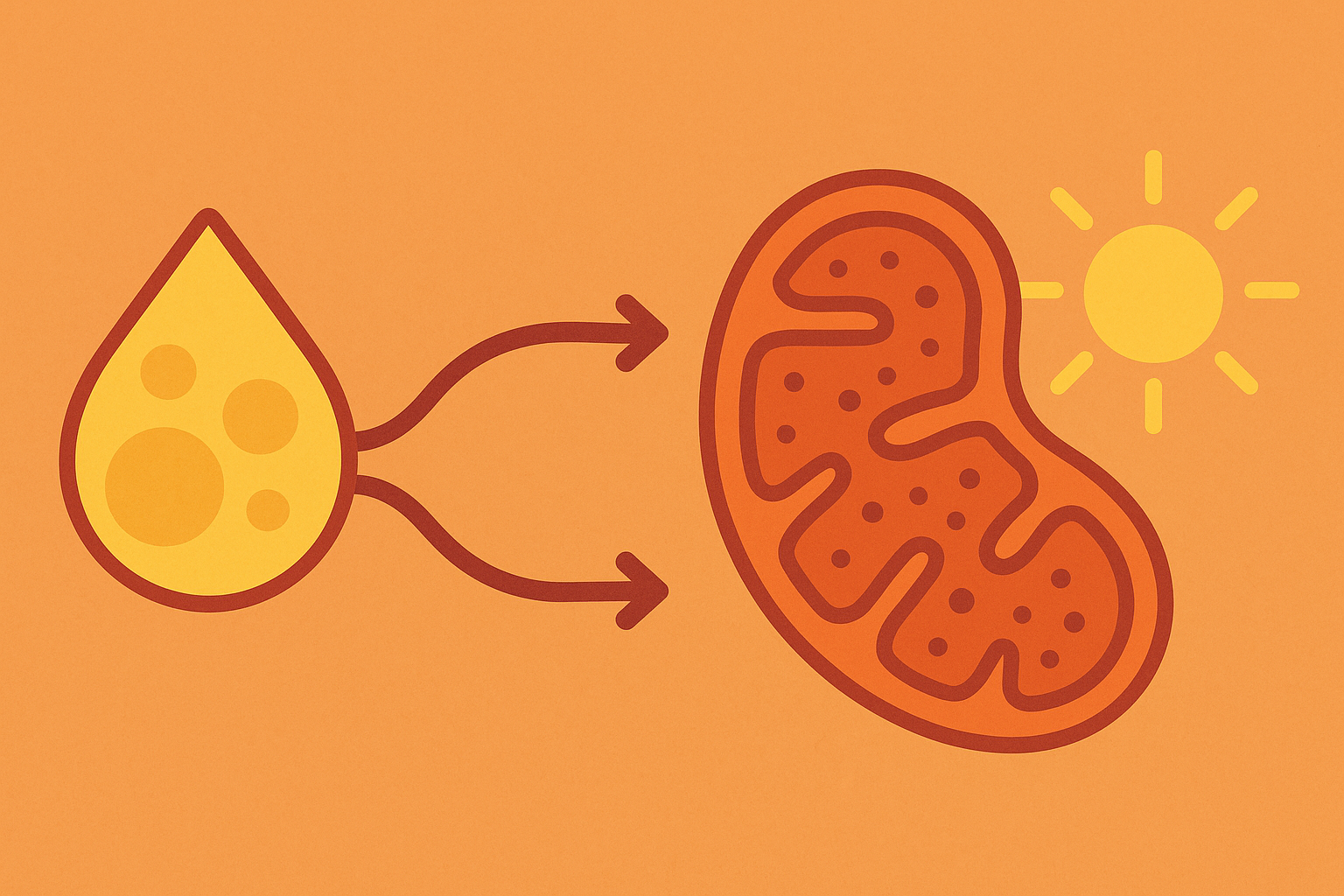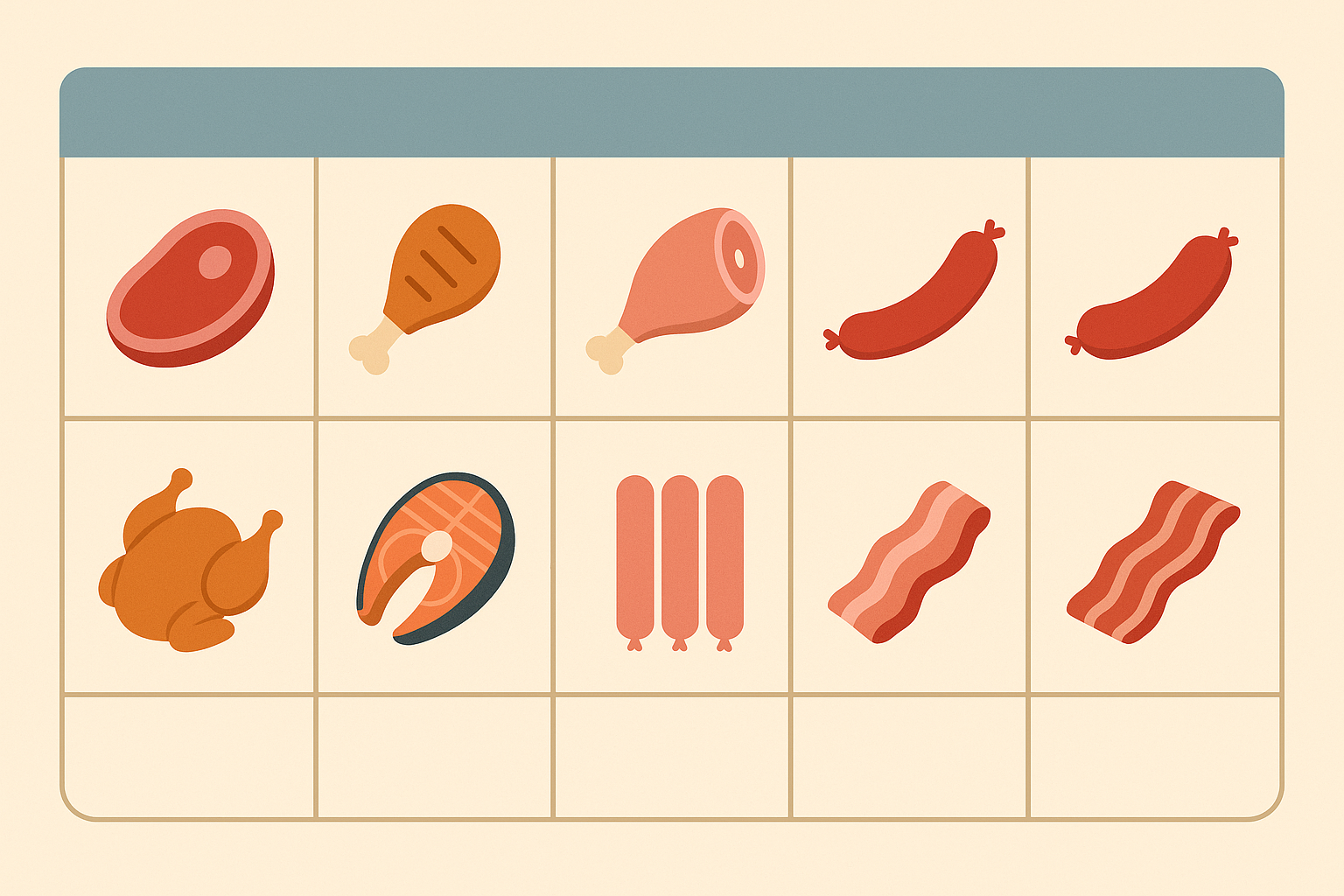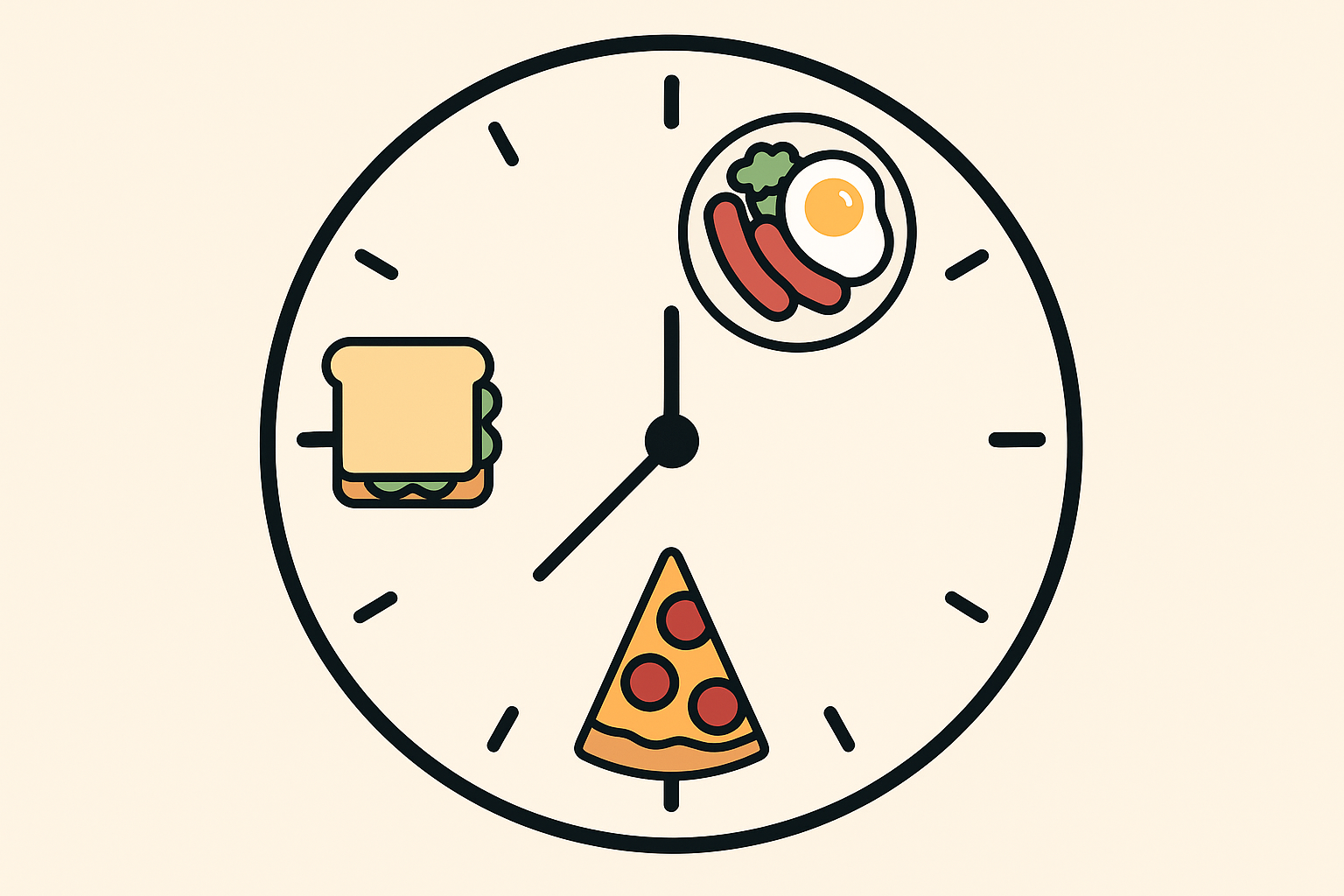What Actually Happened When I Ate Only Meat for 30 Days
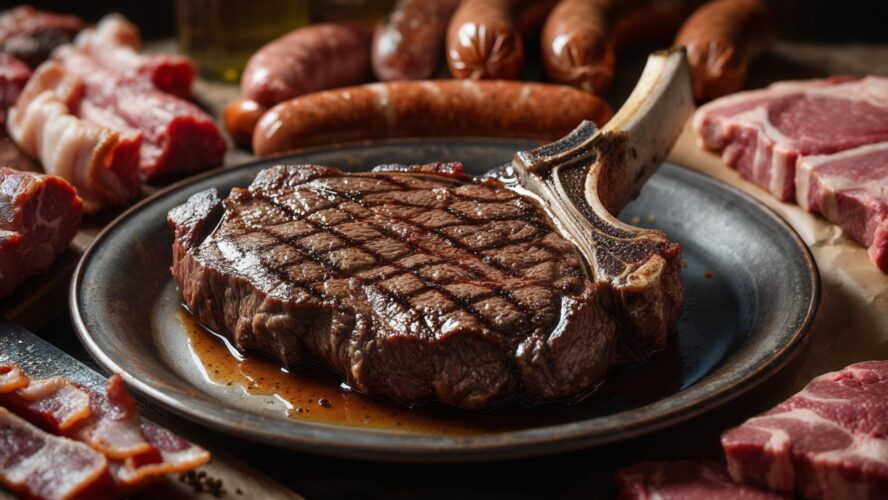
I’ll be honest – when I first heard about the carnivore diet, I thought it sounded absolutely insane. The idea of eating nothing but meat for a month? My friends definitely thought I’d joined some weird cult. But after years of trying every dietary approach under the sun and still dealing with brain fog, digestive issues, and constant food obsessions, I figured I had nothing left to lose.
What started as pure curiosity about elimination diets turned into… well, something I didn’t expect. The carnivore diet has exploded in popularity, with “over 1.5 billion people” viewing social media posts about carnivore eating according to Woman’s World. Here’s my completely honest account of what those 30 days were actually like – the good, the weird, and the moments I questioned every life choice that led me there.

Table of Contents
- The Day I Almost Quit (And Why I’m Glad I Didn’t)
- Week-by-Week: The Real Story (Not the Instagram Version)
- How Eating Only Meat Accidentally Fixed My Decision Paralysis
- Everything I Thought I Knew About Nutrition Was Wrong
- My Awkward Journey Into Eating “Weird” Animal Parts
- The Digestive Weirdness Nobody Talks About
- When My Body Stopped Running on Carbs (It Was Rough)
- My Hilariously Simple Meal Planning System
- How I Survived Social Situations Without Looking Completely Insane
- Final Thoughts: Would I Do It Again?
TL;DR
Look, I know this sounds crazy, but here’s what actually happened:
- My brain fog lifted around week 3 – I could finally focus on Netflix without checking my phone every 5 minutes
- Grocery shopping became hilariously simple (and probably confused the hell out of the cashier)
- My jeans started fitting differently around week 3, though I wasn’t even trying to lose weight
- The first 10-14 days were rough – like, really rough – but weeks 3-4 felt pretty amazing
- I became “that person” who asks a million questions about how the steak is prepared
- My grocery bill went through the roof, but my mental bandwidth for food decisions disappeared
- Progress wasn’t linear – I’d have a great day followed by two crappy ones
The Day I Almost Quit (And Why I’m Glad I Didn’t)
Day 5 was when I seriously considered throwing in the towel. I was standing in my kitchen at 2 PM, staring at another piece of ground beef, wondering if I’d completely lost my mind. My brain felt like it was wrapped in cotton, I was irritable as hell, and honestly, I missed the simple pleasure of crunching on something – anything.
The cognitive changes I was hoping for felt more like the strategies for beating brain fog I’d tried before, except everything felt worse before it got better. Understanding mental fitness from a doctor’s perspective helped me realize this might actually be normal adaptation, not me slowly poisoning myself.
My brain was basically learning to run on a totally different type of gas, and it was not happy about the transition. The constant mental chatter that usually filled my head had been replaced by… nothing. Not peaceful nothing. More like confused, foggy nothing.
I called my sister that day and said, “I think I’m dying.” She laughed and reminded me that I’d said the same thing during my first week of keto, my juice cleanse, and when I tried going vegan. Fair point.
Week-by-Week: The Real Story (Not the Instagram Version)
Let me be real with you – progress wasn’t some neat, linear journey. Some days I felt amazing, other days I felt like I got hit by a truck. Social media makes everything look perfect, but here’s what actually happened week by week.
| Week | Mental State | Energy Level | Social Situations | Biggest Challenge |
|---|---|---|---|---|
| Week 1 | Foggy, questioning everything | Crashed by 3 PM daily | Avoided them completely | Not crying at pizza commercials |
| Week 2 | Slightly less zombie-like | Rollercoaster rides | Awkward explanations | My mom’s daily “are you dying?” calls |
| Week 3 | Actually focused during meetings | Steady for first time in years | Getting easier to navigate | Resisting the urge to evangelize |
| Week 4 | Clearer than I’d felt in ages | Consistent and sustained | Almost normal again | Deciding what comes next |
Days 1-7: When I Questioned Every Life Choice
The first week was brutal. I’m not going to sugarcoat it. My brain felt like someone had stuffed it with cotton balls, and I couldn’t string together coherent thoughts to save my life. Day 3, I sat at my computer trying to write a simple email and just stared at the blank screen for 20 minutes. Words felt like they were hiding from me.
My mood swings were intense. One minute I’d feel weirdly euphoric about my “experiment,” the next I’d be irritable about the fact that my dinner looked like something a caveman would eat. My spouse was supportive but definitely worried I’d lost it completely.
The kids kept asking when I’d eat “normal food” again, which honestly made me question the same thing. Was this sustainable? Was I doing something terrible to my body? The uncertainty was almost worse than the physical symptoms.
Days 8-14: The Fog Starts Lifting (Sort Of)
Around day 8, something shifted. Not dramatically – more like someone had cracked open a window in my foggy brain. I started having moments of clarity that I hadn’t experienced in years. They were brief, but they were there.
My coworker asked if I was feeling okay because I wasn’t reaching for my usual 3 PM snack. I realized I’d completely forgotten about it. My appetite was changing in ways I didn’t expect – I wasn’t constantly thinking about my next meal anymore.
The irritability was still there, but it was mixed with these weird moments of mental sharpness. I could tackle work problems without the usual afternoon brain crash. It was like my brain had found a different gear.
Days 15-30: When Things Got Interesting
Week 3 is when I started understanding what people meant when they talked about “carnivore clarity.” I could focus on tasks for extended periods without my mind wandering to grocery lists or wondering what was in the fridge. This wasn’t just improved concentration – it felt like my brain had been decluttered.
My memory got noticeably better. I started remembering people’s names, appointment times, and project details without constantly checking my phone. My decision-making became weirdly effortless. Where I used to agonize over choices big and small, I found myself making clear decisions quickly.
The most surprising part? My mood stabilized in a way it hadn’t in years. The dramatic ups and downs that used to derail my productivity just… stopped. I felt emotionally steady for the first time in ages.
Why My Brain Finally Calmed Down
Here’s what I think happened (and I’m no scientist, so take this with a grain of salt): removing all the plant stuff from my diet seemed to let my brain chemistry reset itself. Without the constant input of various compounds from fruits, vegetables, and grains, my neurotransmitters found some kind of baseline.
The change in how my brain processed tryptophan was noticeable. Instead of the blood sugar roller coasters that came with plant-based meals, meat delivered steady amino acids that seemed to support consistent serotonin production. My sleep quality improved, my anxiety decreased, and my overall mood felt more stable than it had in years.
How Eating Only Meat Accidentally Fixed My Decision Paralysis
This was the weirdest unexpected benefit. Reducing my food choices to basically one category freed up mental bandwidth I didn’t even know I was using. When you’re not spending brain power on meal planning, restaurant menus, and grocery store decisions, you suddenly have all this mental energy for other stuff.
The simplification reminded me of principles I’d learned about intuitive eating, though my approach took it in a completely different direction. The mental clarity also connected to what I’d read about how diet culture can be toxic – sometimes the answer really is radical simplification.
I realized I’d been spending hours each week just thinking about food. What to buy, what to cook, what to order, what combinations would taste good – the mental load was enormous. My new eating approach eliminated 90% of these decisions instantly.
The Freedom I Found in Constraints
This sounds completely backwards, but eliminating most of my food options actually felt liberating. Instead of standing in grocery aisles overwhelmed by choices or spending 20 minutes deciding what to order at restaurants, I could focus on things that actually mattered.
Before this experiment, I would spend 15 minutes at lunch deciding between salad options, sandwich combinations, and side dishes. After week 2, I walked into restaurants and simply asked, “What’s your best steak?” Decision made in 10 seconds, mental energy preserved for afternoon work.
My grocery shopping became hilariously simple and probably confused the hell out of the cashier. I’d walk straight to the meat section, grab what I needed, and be out in 10 minutes. No more wandering the aisles comparing ingredients and prices on 47 different products.
When My Family Thought I’d Lost My Mind
The social aspect was definitely the most challenging part. My mom called every other day to make sure I wasn’t dying. My friends made jokes about me turning into a caveman. The kids kept asking why daddy’s dinner looked so boring.
I had to develop scripts for handling business dinners, family gatherings, and social events. The key was having prepared responses that didn’t make me seem like I’d joined a cult while still maintaining my commitment to the experiment.
My Social Navigation Survival Kit:
- “I’m doing an elimination diet to figure out some health stuff”
- “Just trying something different for a month”
- “My doctor suggested I try this” (technically true – I’d read articles by doctors)
- Having backup snacks (beef jerky) for unexpected situations
- Researching restaurant menus beforehand
- Offering to host gatherings where I controlled the menu
Most people were actually more curious than judgmental once I explained I was doing a 30-day experiment. The temporary nature made it seem less crazy somehow.
Creating New Food Rituals That Actually Mattered
I had to replace the emotional connections I’d built around food variety with new meaningful rituals. This meant learning to appreciate meat selection, proper cooking techniques, and creating some ceremony around the whole process.
I started visiting local butchers and learning about different cuts, aging processes, and sourcing methods. Instead of complex recipes with multiple ingredients, I focused on perfecting basic techniques – proper searing, temperature control, seasoning timing. These skills felt more valuable than memorizing complicated recipes.
My kitchen rituals simplified but deepened. The process became more meditative and intentional, even if the end result looked boring to outside observers.
Everything I Thought I Knew About Nutrition Was Wrong
This was the biggest mind-bender of the whole experience. Everything I’d been taught about needing variety and plants for complete nutrition started crumbling when I realized how nutrient-dense animal foods actually are. This wasn’t just theory – my energy levels, skin quality, and overall vitality improved dramatically.
According to research from Harvard experts surveying thousands of carnivores, “about 93 percent of carnivores lost weight, 97 percent resolved GI trouble, 96 percent reported better mental well-being and 93 percent experienced lowered blood pressure” as reported by Woman’s World.
My transformation was more dramatic than what I’d experienced with understanding which supplements you actually need, though I discovered I needed way fewer than expected. The nutrients in animal foods seemed more readily available to my body than anything I’d tried before.
I’d been conditioned to believe that colorful plates meant complete nutrition, but my body was thriving on what looked like the most monotone diet imaginable. My energy levels, skin quality, and overall vitality improved in ways that made me question everything I thought I knew about healthy eating.
My Awkward Journey Into Eating “Weird” Animal Parts
Let’s be honest – the idea of eating organ meats made me gag at first. But I kept reading about how nutrient-dense they were, so I figured I should at least try. Finding ways to make liver and kidney actually palatable became like a weird cooking challenge.
I started small with liver twice a week, treating it like a natural multivitamin rather than something I had to enjoy. The trick was finding preparation methods that made these powerhouse foods actually edible rather than something I had to choke down.
My breakthrough came when I discovered that mixing 20% ground liver with 80% ground beef created “enhanced” burgers that tasted amazing while delivering incredible nutrition. The liver flavor was completely masked, but the nutritional density was off the charts.
How I Made Organ Meats Not Terrible
Slow-cooking organ meats with plenty of salt and fat completely transformed their texture and flavor. What had seemed intimidating became actually delicious when prepared properly. I learned to appreciate the rich, mineral taste of kidney and the mild sweetness of heart muscle.
My cooking skills expanded rapidly as I experimented with different organ meat combinations. I found that mixing organs with familiar cuts created bridge foods that helped my palate adapt while ensuring I was getting complete nutrition.
My Weekly Bone Marrow Ritual
Weekly bone marrow became my secret weapon for vitamin K2 and healthy fats. I learned to roast marrow bones properly and make rich, gelatinous broths that became the foundation of my nutritional strategy.
My Bone Marrow Process:
- Get grass-fed marrow bones from local butcher (after building a relationship and explaining I wasn’t completely insane)
- Roast at 450°F for 15-20 minutes until bubbling
- Season with coarse sea salt immediately
- Eat warm with a small spoon (felt very primal)
- Save bones for broth within 24 hours
- Simmer bones 24-48 hours for maximum collagen
The rich, buttery texture and mineral-dense flavor satisfied cravings I didn’t know I had. This became something I genuinely looked forward to rather than a nutritional chore.
The Mineral Absorption Game-Changer
Removing plant compounds that block mineral absorption seemed to dramatically improve my body’s ability to use the minerals from meat. Issues that had persisted despite years of supplementation started improving. My iron levels got better, my zinc status normalized, and my magnesium absorption became more efficient.
Without plant-based compounds interfering with mineral uptake, my body could finally access and use the minerals present in animal foods. Blood tests confirmed what I was feeling – my mineral status was improving across the board.
When I Had to Completely Rethink Salt
I had to abandon everything I thought I knew about sodium restriction. My kidneys were processing electrolytes differently, and I needed significantly more salt than before. Pink Himalayan salt became something I added generously to every meal without the guilt I’d previously associated with salt consumption.
The Digestive Weirdness Nobody Talks About
My gut went through some seriously strange changes that nobody had warned me about. Within two weeks, chronic issues I’d been dealing with for years started disappearing, but the process was… interesting. Even my doctor was surprised by the improvements in my digestive markers.
The rise of carnivore dieting among women has been particularly notable, with female meatfluencers reporting that “around 60 percent” of their followers are women according to The Cut, which made me feel less like a weirdo for trying this approach.
My digestive improvements were way more dramatic than the simple ways to beat bloat I’d tried before. The gut healing I experienced also reminded me of what I’d read about drinking vinegars for gut health, though my approach was completely different.
Within two weeks, symptoms that had been my constant companions for years just… vanished. My stomach stopped producing excess acid, the chronic bloating became a thing of the past, and my overall digestive comfort improved in ways I hadn’t experienced in ages.
How My Gut Healed Without Fiber (Who Knew?)
This was the biggest shock to my system – both literally and figuratively. Everything I’d been told about needing fiber for digestive health went out the window. Removing all that roughage allowed my inflamed intestinal walls to actually heal instead of being constantly scraped raw.
Research shows that “low-carbohydrate diets like Carnivore can have various health effects on balancing metabolic markers and root-cause healing, which helps improve insulin resistance, control blood sugar levels, regulate hormones, and reduce inflammation” according to GoCarnivore.
My IBS symptoms disappeared completely. The chronic bloating that made me look six months pregnant after every meal became a distant memory. My digestive system finally found peace after years of what felt like internal warfare.
Without constant mechanical irritation from indigestible plant matter, my gut could finally begin healing. Years of forcing fiber through an inflamed digestive tract had apparently been counterproductive. Who would have thought?
The Gut Repair Timeline (The Real Version)
The first two weeks brought some… interesting changes as my gut bacteria figured out what the hell was happening. Weeks three and four showed real improvements, and by the end of the month, my digestive function felt better than it had in years.
| Digestive Issue | Week 1 | Week 2 | Week 3 | Week 4 | 3 Months Later |
|---|---|---|---|---|---|
| Bloating Episodes | Still daily (ugh) | Maybe 3-4x/week | Once or twice | Barely noticeable | What bloating? |
| Bathroom Situation | Unpredictable chaos | Getting more normal | Actually regular | Textbook perfect | Still great |
| Gas Production | Embarrassing levels | Moderately awkward | Barely noticeable | Practically nonexistent | Normal human levels |
| Stomach Pain | My constant companion | Occasional visitor | Rare occurrence | Gone | Still gone |
| Post-Meal Energy | Food coma central | Getting stable | Actually energized | Sustained energy | Consistently good |
The improvements continued long after the 30-day experiment ended. My digestive system seemed to remember how to function properly once I stopped constantly irritating it with plant matter.
Finding Out What Was Actually Bothering Me
Removing all potential plant irritants created a clean slate that helped me identify what was actually causing problems versus what was just inflammation from a damaged gut lining. Many foods I thought I was sensitive to were apparently just irritating an already compromised system.
This process revealed that many of my supposed food sensitivities were actually symptoms of chronic intestinal inflammation rather than true allergic reactions. My gut just needed a break to heal properly.
How My Body Learned to Handle All That Fat
My liver had to figure out how to process way more fat than it was used to, and I had to develop strategies to support my gallbladder during this transition. Understanding this process helped me avoid the digestive disasters that often derail people attempting high-fat approaches.
My gallbladder had to ramp up bile production significantly to handle the increased fat content. I learned to be patient during this adaptation phase and support the transition through strategic meal timing and gradual increases.
My Fat Digestion Learning Curve
I gradually increased my fat intake from about 60% to 80% of calories over the first two weeks, timing my meals carefully to allow my bile production to adapt without overwhelming my system. This gradual approach prevented the digestive disasters that often happen when people jump straight into high-fat eating.
I couldn’t just immediately start eating ribeyes twice a day without giving my digestive system time to adjust its enzyme production and bile flow patterns. Patience was key during this adaptation phase.
Supporting My Gallbladder Through the Chaos
I used intermittent fasting windows to allow complete bile emptying and regeneration. During the first 10 days, I occasionally used bitter herbs when I felt like my gallbladder was struggling. This support strategy helped everything adapt without developing problems.
My gallbladder function actually improved as it adapted to processing higher quality fats from animal sources. It was like giving it a job it was actually designed to do rather than asking it to handle processed vegetable oils.
When My Body Stopped Running on Carbs (It Was Rough)
Forcing my body into fat-burning mode created a more efficient energy system than I’d experienced before, but the transition was no joke. The difference was that pure animal foods seemed to create cleaner metabolic signals without the confusion caused by plant compounds.
My metabolic transformation was more intense than what I’d experienced with finding carb tolerance on keto, and the fat adaptation process reminded me of the benefits I’d read about with intermittent fasting for women.
My body stopped receiving mixed signals about fuel sources and committed fully to fat burning. This metabolic focus translated into steady energy levels throughout the day – once I got through the initial adaptation hell.
Every meal sent consistent signals to my metabolism, allowing for more efficient energy production. No more rollercoaster rides from mixed macronutrient meals.
How I Learned to Burn Fat Like a Machine
Pure animal fat consumption created more consistent energy production without the metabolic confusion I’d experienced from plant-based fats. My energy levels became more stable and predictable, providing steady mental and physical performance throughout the day.
The fats came in their most natural ratios, allowing my liver to work efficiently. Without plant-based oils messing with the process, my fat-burning became remarkably consistent and sustained.
My meal timing aligned with natural energy production cycles. I learned to eat in ways that supported optimal fat burning while maintaining steady energy levels throughout the day.
Balancing Different Types of Animal Fats
I learned to balance medium-chain fats from sources like grass-fed butter with long-chain fats from meat to optimize both immediate energy and sustained fat burning. This strategic fat selection helped me avoid energy crashes and maintain steady performance.
Each cut of meat provided unique fatty acid combinations that supported different aspects of metabolic function. I started appreciating the natural fat profiles found in different animal sources.
When My Blood Sugar Finally Chilled Out
Removing all plant-based triggers allowed my insulin sensitivity to improve more rapidly than other approaches I’d tried. Within weeks, I saw improvements in glucose tolerance that my previous attempts hadn’t achieved.
All the hidden carbohydrates and plant compounds that had been triggering insulin responses were gone. My pancreas could finally rest and reset its insulin production patterns.
Why My Morning Blood Sugar Finally Made Sense
For the first time in years, my morning glucose readings became consistently normal. My liver stopped producing excess glucose in response to plant-based stress compounds, and my morning numbers normalized naturally.
Without plant compounds triggering my liver’s stress response, my morning glucose production became normal and predictable.
How My Workouts Changed
The initial 10-14 day performance dip was real and noticeable, but it was followed by better endurance and strength as my muscles became more efficient at using fat for fuel. My recovery times improved, and my energy became more consistent throughout workouts.
Studies have shown that “a high fat, low carb diet like the Carnivore Diet boosted testosterone levels in participants 13 per cent more than their low fat, high fibre dieting counterparts” according to Man of Many.
My workouts became more sustainable and my recovery dramatically improved. My muscles learned to become metabolically flexible and efficient at using multiple fuel sources.
My Hilariously Simple Meal Planning System
Moving beyond just “eat meat,” I had to develop an actual system that kept me fed, satisfied, and socially functional throughout the 30 days. This approach prevented the monotony and social isolation that often derail people trying this approach.
My 30-Day Survival Checklist:
- Plan protein sources 1 week ahead (became like a part-time job)
- Rotate between different cooking methods daily (sanity preservation)
- Schedule organ meat consumption 2x per week (nutritional insurance)
- Prep bone broth in large batches every Sunday (liquid gold)
- Stock emergency snacks (beef jerky everywhere)
- Research restaurant options for social events (homework time)
- Track meal timing and hunger patterns (science experiment mode)
- Adjust fat ratios based on activity levels (trial and error)
The approach required way more strategic thinking than I’d initially anticipated. I needed structure to ensure I didn’t get bored or malnourished while still maintaining flexibility for real life.
My meal planning evolved into a sophisticated rotation system that maximized both nutrition and satisfaction. Each week brought different proteins, preparation methods, and meal timings that kept things interesting.
Let’s be honest – my grocery bill went through the roof, and finding good quality meat became like a part-time job. But the simplicity of decision-making was genuinely liberating once I got the hang of it.
The Protein Rotation That Saved My Sanity
I created a systematic approach to cycling through different animal proteins that prevented food boredom while ensuring diverse nutrition. This rotation strategy kept me from developing food aversions and made the 30 days feel varied rather than restrictive.
The trend has evolved beyond long-term commitment, with many people now trying “carnivore challenge” or “carnivore 30” as reported by The Cut, making it more accessible as a month-long experiment rather than a permanent lifestyle change.
My meal rotation prevented the psychological rebellion that often happens with restrictive approaches. By cycling through different proteins systematically, I maintained interest and excitement about my meals throughout the entire month.
The variety came from preparation methods and protein sources rather than ingredient combinations. I learned to create diversity within constraints, making each meal feel unique and satisfying.
My Weekly Protein Schedule
Monday became beef day (ribeye or ground beef), Tuesday was pork (bacon or chops), Wednesday featured lamb, Thursday brought poultry, Friday meant fish or seafood, Saturday was organ meat day, and Sunday allowed for wild game or specialty cuts. Each day had specific preparation methods that kept things interesting.
The structure gave me something to look forward to each day. Knowing that Wednesday meant lamb or Thursday brought fresh fish created anticipation and prevented the monotony that could have killed my motivation.
My weekly meal planning became a ritual that I genuinely enjoyed. Selecting proteins, researching preparation methods, and planning cooking techniques became an engaging part of the process rather than a chore.
Keeping Things Interesting with Texture and Temperature
I alternated between slow-cooked, grilled, raw (sashimi and tartare), and cured preparations to maintain sensory interest and prevent the psychological fatigue that comes from repetitive textures. This variety kept my meals exciting and prevented mental rebellion.
On Wednesday, I might have slow-braised lamb shanks for lunch and then lamb carpaccio for dinner – same protein, completely different experiences. This approach kept my palate engaged while staying within the constraints.
Temperature variations became crucial for maintaining interest. Cold preparations like beef tartare provided completely different sensory experiences than hot roasted meats, creating variety within the limitations.
My cooking skills expanded to include techniques I’d never tried before. Curing, smoking, and raw preparations opened up entirely new flavor profiles that kept the experience exciting and novel.
Adjusting Based on How I Felt
I learned to adjust my daily fat ratios from 70-80% based on my activity levels. Higher fat days (ribeye, pork belly) worked better on rest days, while leaner cuts (sirloin, chicken breast with added fat) supported my training days more effectively.
My meal composition changed based on my daily energy requirements. Training days called for different ratios than sedentary days, and I learned to match my food choices to my activity patterns.
How I Timed My Meals (And Accidentally Started Fasting)
I aligned my meal frequency and size with natural hunger signals and digestive capacity. This typically meant evolving from three meals in week one to two meals or one meal a day by week four as my appetite naturally decreased.
The approach naturally led to extended fasting periods as my hunger signals normalized. I didn’t force intermittent fasting – it happened organically as my appetite regulation improved.
My meal timing became intuitive rather than scheduled. I ate when genuinely hungry and stopped when satisfied, leading to natural meal consolidation over the 30-day period.
My Natural Rhythm Discovery
I consumed 60-70% of my daily protein in my first meal to align with natural hormone patterns. Lighter evening meals supported better sleep quality and allowed my digestive system to rest and repair overnight.
The meal distribution followed natural hormone patterns rather than arbitrary meal schedules. Front-loading protein supported my body’s natural processes while evening meals remained light and easily digestible.
Staying Social While Eating Weird
I planned my largest, most social-friendly meals (steaks, roasts) during typical dinner times while keeping breakfast and lunch simple (eggs, ground beef). This framework allowed me to maintain social connections without compromising my experiment.
My approach didn’t isolate me socially because I planned strategically around social eating situations. Restaurant meals became opportunities to enjoy high-quality steaks and seafood while maintaining my protocol.
The look on people’s faces when I ordered just a steak – no potato, no salad, no nothing – was priceless. But most restaurants could accommodate this pretty easily once I learned to navigate menus effectively.
Final Thoughts: Would I Do It Again?
My 30-day carnivore experiment turned into something way bigger than I expected. What started as curiosity about elimination diets became a complete reset of how I think about food, my body, and my mental clarity. The brain changes alone were worth the experiment, but the digestive healing, metabolic improvements, and simplified decision-making created lasting changes that extended far beyond the 30 days.
The hardest part wasn’t giving up certain foods – it was unlearning everything I thought I knew about nutrition. Discovering that my body could thrive without plants, that my gut could heal without fiber, and that my brain could function better without constant input from plant compounds challenged beliefs I’d held for years.
Would I recommend this approach to everyone? That’s not for me to say – I’m not a doctor, nutritionist, or anyone qualified to give advice. But I can tell you that for someone who’d tried every dietary approach under the sun, this 30-day reset provided clarity and results that nothing else had delivered. The key was approaching it systematically, understanding the adaptation process, and having realistic expectations about the timeline.
If you’re considering your own carnivore experiment, remember that the first two weeks are about adaptation, not optimization. Your body needs time to remember how to run on animal foods alone. Be patient with the process, track your changes, and don’t let temporary discomfort derail what could be a transformative experience.
There were definitely days I wondered if I was doing something terrible to my body. Week 1 was rough – like, really rough. I questioned every life choice that led me to standing in my kitchen staring at another piece of ground beef. But I’m genuinely glad I pushed through those initial uncomfortable days.
Was it perfect? Nope. Was it life-changing? For me, yeah. Will it work for you? I honestly have no idea. But if you’re curious enough to try it, hopefully my honest account of what those 30 days were actually like helps you know what you might be getting into.
The carnivore approach taught me that sometimes the most radical solution is also the simplest one. Eliminating complexity from my nutrition allowed my body to focus on healing and optimization rather than constantly managing dietary stress and inflammation.
My 30-day experiment became the foundation for long-term changes in how I think about food, health, and nutrition. The lessons learned during those 30 days continue to influence my eating patterns and health decisions months later. Your mileage may vary – I’m just one person sharing what happened to me.
The approach challenged conventional wisdom in ways that proved beneficial for my specific situation. While it may not be appropriate for everyone, it provided exactly what my body needed to reset and heal from years of dietary confusion and chronic inflammation.
My carnivore journey proved that our bodies are remarkably adaptable when given the right conditions. The 30-day experiment became a powerful tool for understanding my individual nutritional needs and metabolic preferences, even if it made me temporarily “that person” at dinner parties.

